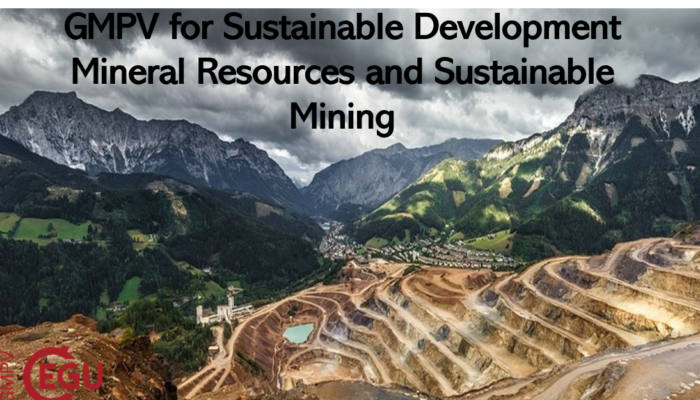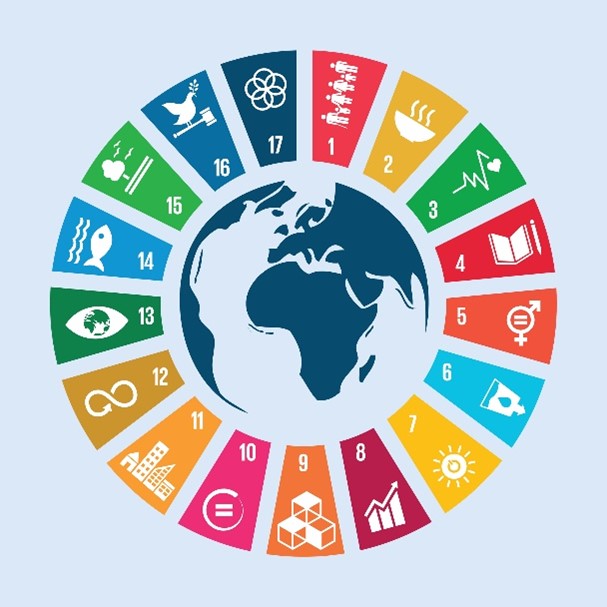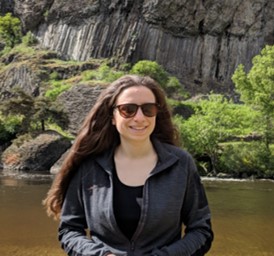
GMPV and The Sustainable Development Goals
In 2015 all United Nations Member States adopted a set of Global Goals, as a universal call to protect our planet, end poverty and ensure that all people can enjoy peace and prosperity. These are called the Sustainable Development Goals – 17 integrated goals aimed at addressing the challenges our society is currently facing considering social, economic, and environmental sustainability.
From decarbonization, to disaster risk reduction and natural resources, geoscience and geoscientists can play a key role in achieving these goals. This blog series will explore how geoscientists, and in particular Geochemistry, Mineralogists, Petrologists and Volcanologists, fit into this this framework.
Mineral Resources & Sustainability
The first post will look at mineral resources and sustainable mining. To better understand the role that GMPV research can play in mineral resources exploration and sustainable mining, we speak to Dr. Rebecca Paisley, Exploration Geochemist at Cornish Lithium Ltd., a volcanologist by training, to learn about her path into the mining industry.
From industry innovation and infrastructure (SDG 9) to responsible production and consumption (SD12), and climate action (SDG13), the mining industry is strongly involved in all the Sustainable Development Goals.
Mineral resources such as ores, industrial minerals and building stones are essential for modern societies. They drive economic development, are necessary materials for building cities and infrastructure, and are increasingly used in technological development from communication technology to renewable energy sources. The growing urban population and increased standards of living have resulted in a rising demand for these resources, especially in light of the transition to a low carbon society. For instance, electric storage batteries require specific metals such as aluminum, iron, lithium, cobalt, and manganese. “A single wind turbine, for example, contains 2 tons of Rare Earth Elements, a solar panel contains elements such as silver, neodymium and indium, and the battery pack in an electric vehicle can contain 65 kg graphite, 35 kg of copper, 22 kg of nickel and 9 kg of lithium. […] This equates to a lot of metals that need to be sourced in the coming decades”, Rebecca tells us.
Nevertheless, because of past accidents, environmental pollution and poor practices, the mining industry sometimes still suffers from a bad public reputation. Problems and risks including environmental pollution, impact on ecosystems and biodiversity, loss of natural resources and impacts on the local communities are the most critical challenges facing the industry today. In this regard mining presents a critical sustainability challenge, where declining ore grades and availability for most minerals, and the need for further exploration and extraction, must be balanced with environmental sustainability and sustainable social development.
So how can geoscientists help?
Geochemistry, mineralogy and petrology are essential to finding new reserves and resources, and understanding how, where and why these form. Mineral resources encompass ores, industrial minerals and building stones, which form via a range of geological processes.
From precious metals to metals required for steel production (e.g. nickel and niobium), technology (e.g. gallium, indium, REEs), and renewable energy technology (e.g. lithium, europium) these deposits play a critical role in our modern society. Because of their importance and, at the same time, low supply and availability, we call some of these “critical metals”. Often, a small number of mines, or countries, hold the majority of the deposits. From understanding the processes that result in the accumulation of elements into ore bodies and finding new types of ores, to developing exploration techniques and recycling opportunities and studying potential accompanying risks of environmental contamination, geochemistry can really play a central role in the future of the industry.
“In order to identify new sustainable opportunities, it is necessary to have a good understanding of the mineralogy and geochemistry of target metals and minerals, and geologists are equipped with the skills” says Rebecca.
“My research background is rooted in using the chemistry of samples to understand processes that occur in the plumbing systems and conduits of volcanoes before and during eruption”. Following a master’s degree at the University of Oxford, Dr. Paisley moved to McGill University as a PhD researcher focusing on degassing and fracturing of rhyolitic magmas. Whilst always interested in mineral exploration, Dr. Paisley’s exposure to this industry peaked during her time in Canada. “I was part of our department’s SEG student chapter, we organised sponsorship to fund field trips to Brazil and China visiting over a dozen different mines, and went to PDAC – a global mining conference, to network with different companies. […] Through other students in my department I heard a lot about different projects and picked up an understanding of how the industry worked”.
Rebecca tells us that starting in the industry for her was “a combination of luck, fortunate timing and hard work”, and indeed there are many skills that can be transferred from GMPV research to working in industry.
“During your PhD you learn to quickly absorb a lot of new information and use it to make interpretations, that has been a useful skill when it has come to writing company reports and memos on new regions to explore. In your PhD you are, essentially, a project manager. You manage your time and develop a project, planning nearly everything from fieldwork/labwork to conferences and papers – with varying degrees of support from supervisors. This gives you a great advantage in any industry and is something graduates often forget about on their CVs”.
In her current role as an Exploration Geochemist, Dr. Paisley still puts her geochemistry experience to practice. “My research background quite transferable as I am still trying to understand processes that can impact the chemistry of samples, only those samples are now geothermal waters and not obsidian”. Developing new control procedures and sampling campaign methods, Rebecca also found her geochemistry expertise particularly useful: “Understanding of a wide number analytical instruments, their advantages and most importantly (!) their limitations, has been a huge asset. Quality control of data and samples is essential in the mining industry”.
Great challenges and opportunities
For mining activities to be sustainable, we must better balance the demand for mineral resources with the possible negative social and environmental impacts. Geoscientists here have the opportunity to address these issues by collaborating with economists, engineers, social scientists and political scientists to improve the sustainability of resources.
“The biggest challenge in mining is how can the industry successfully contribute to addressing the climate crisis […] Low carbon technologies (from electric vehicles, to solar panels and wind turbines) are very mineral-intensive, and these can’t solely be sourced from recycling. The transition to a low-carbon future is going to be dependent on finding new ore deposits for a wide variety of critical metals.“
Research activities on mineral resources are therefore essential to better understand how to find, sustainably source and use natural resources, and to find alternatives for the most critical metals. Strengthening the relationships between academic research, industrial research and development could also play a pivotal role in providing knowledge for the future generation of geologists and the future of exploration.
We asked Rebecca her thoughts on the role that geoscience can play in sustainable mining: “This challenge provides a great opportunity to those in the GMPV field because the mining industry needs geologists, geochemists and mineralogists to find new ore deposits and how the elements are hosted in minerals […] This lays the foundation for the sustainable extraction of minerals, with the lowest possible carbon footprint”.
“Ultimately exploration boils down to understanding the fundamental processes that shape our planet – something that those in the GMPV field work on every day.”



Pingback: Geochemistry, Mineralogy, Petrology & Volcanology | We are upgrading the GMPV blog!!
Pingback: Geochemistry, Mineralogy, Petrology & Volcanology | GMPV for Sustainable Development – Geothermal Energy
Pingback: Geochemistry, Mineralogy, Petrology & Volcanology | GMPV Campfires co-hosted with ERE Division: Sustainability Talks! Wednesday 16th June @ 11am CEST
Pingback: Geochemistry, Mineralogy, Petrology & Volcanology | Carbonate Minerals: the Silent Players of Climate Change – Victoria Corcimaru for GMPV for Sustainable Development
Pingback: Geochemistry, Mineralogy, Petrology & Volcanology | GMPV for Sustainable Development – Geohazards and Volcanic Monitoring
Pingback: Geochemistry, Mineralogy, Petrology & Volcanology | GMPV for Sustainable Development – the role of Museums and Heritage